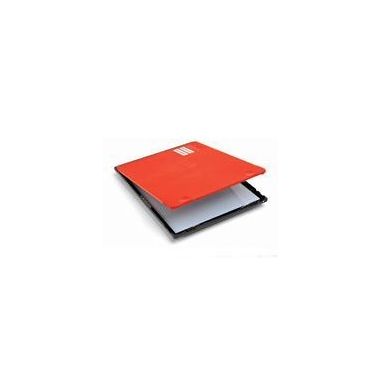

Plant and machinery, land and buildings, furniture, computers, copyright, and vehicles are all examples. This amount can be determined by whatever is necessary to make the journal entry balance. For example, on January 15, 2021, the company ABC retires an office equipment item which is a plant asset that costs $10,000. For each of the ten years of the useful life of the asset, depreciation will be the same since we are using straight-line depreciation. However, accumulated depreciation increases by that amount until the asset is fully depreciated in year ten. Business owners can claim a valuable tax deduction if they keep track of the accumulated depreciation of their eligible assets.

Those accounting methods include the straight-line method, the declining balance method, the double-declining balance method, the units of production method, or the sum-of-the-years method. In general, accumulated depreciation is calculated by taking the depreciable base of an asset and dividing it by a suitable divisor such as years of use or units of production. A fixed asset disposal journal entry depends on whether the disposal was a sale, retirement, or exchange. The common denominator for all journal entries would be the recognition of a gain or loss. If you have a small business accounting software like QuickBooks Online, you can create disposal journal entries in QuickBooks Online’s journal module.
Retirement of Plant Assets Journal Entry
The balance of the accumulated depreciation account increases every year with the depreciation charge of the current year. To record the same, the depreciation expenses account will be debited, and the accumulated depreciation account will be credited to the company’s books of accounts. The accumulated depreciation journal entry credits the accumulated depreciation account every year with the yearly depreciation figure, the balance of which is shown in the company’s financial statements. This company can get to know the amount of the total depreciation expense which already has been charged by the company on its assets since its purchase date. An adjusting entry for depreciation expense is a journal entry made at the end of a period to reflect the expense in the income statement and the decrease in value of the fixed asset on the balance sheet. The entry generally involves debiting depreciation expense and crediting accumulated depreciation.
Finance Strategists is a leading financial literacy non-profit organization priding itself on providing accurate and reliable financial information to millions of readers each year. A lorry costs $4,000 and will have a scrap value of $500 after continuous use of 10 years. This means that the cost of $3,500 ($4,000 – $500) is to be allocated as an expense over 10 years. We faced problems while connecting to the server or receiving data from the server.
Credit BalanceCredit Balance is the capital amount that a company owes to its customers & it is reflected on the right side of the General Ledger Account. Usually, Liability accounts, Revenue accounts, Equity Accounts, Contra-Expense & Contra-Asset accounts tend to have the credit balance. Fixed Assets Of The CompanyFixed assets are assets that are held for the long term and are not expected to be converted into cash in a short period of time.
The accounting entry for depreciation
This way, they can match expenses to the revenues they help generate. While it does not appear on the balance sheet, it is crucial in reporting a company’s assets. If you’re lucky enough to use an accounting software application that includes a fixed assets module, you can record any depreciation journal entries directly in the software. In many cases, even using software, you’ll still have to enter a journal entry manually into your application in order to record depreciation expense.
It happens because of the difference in the depreciation method adopted by the market and the company. Of the accumulated depreciation account eventually becomes as large as the cost of the assets that are being depreciated. It becomes time-consuming for companies with many assets to record every entry related to the accumulated depreciation. Depreciation AccountDepreciation is a systematic allocation method used to account for the costs of any physical or tangible asset throughout its useful life. Depreciation enables companies to generate revenue from their assets while only charging a fraction of the cost of the asset in use each year.
- Journal EntryAccountDebitCreditDepreciation Expense40,000Accumulated Depreciation40,000Similar to the first year, company allocates the value of the fixed assets to the depreciation expense.
- For a fuller explanation of journal entries, view our examples section.
- Vehicles$10,000Less Accumulated Depreciation (4.000)Net Book Value$ 6,000Table showing Fixed Asset portion of a Balance Sheet The Depreciation has Accumulated to $4,000.
- The journal entry of spreading the cost of fixed assets is very simple and straightforward.
Accumulated depreciation is dependent on salvage value; salvage value is determined as the amount a company may expect to receive in exchange for selling an asset at the end of its useful life. By continuing this process, the accumulated depreciation at the end of year 5 is $49,000. Therefore, the net book value at the end of year 5 is $1,000 which is the estimated scrap value.
Since we are using straight-line depreciation, $9,500 will be the depreciation for each year. However, the accumulated depreciation is shown in the following table since it is the sum of the asset’s depreciation. Accumulated depreciation of an asset is an important financial metric for the business as it reduces a firm’s value on the balance sheet.
Accumulated DepreciationThe accumulated depreciation of an asset is the amount of cumulative depreciation charged on the asset from its purchase date until the reporting date. This depreciation journal entry will be made every month until the balance in the accumulated depreciation account for that asset equals the purchase price or until that asset is disposed of. Depreciation and a number of other accounting tasks make it inefficient for the accounting department to properly track and account for fixed assets. They reduce this labor by using a capitalization limit to restrict the number of expenditures that are classified as fixed assets.
Depreciation on Machinery Journal Entry
Identifying the fixed asset of the business and those that are subject to a reduction in their values over the years due to usage, wear and tear or any other reason. Notice, that the Tangible assets are all those assets that the company owns and can be seen as a part of the journal entry for accumulated depreciation balance sheet. According to your general ledger, the asset’s balance is $10,000 with accumulated depreciation of $6,000, for a net book value of $4,000. Yes, you should have a dedicated accumulated depreciation sub-account for every asset your business is depreciating.
This decrease in value is matched with an increase in accumulated depreciation, which provides a more accurate valuation of assets on the balance sheet. In using the declining balance method, a company reports larger depreciation expenses during the earlier years of an asset’s useful life. Although it is reported on the balance sheet under the asset section, accumulated depreciation reduces the total value of assets recognized on the financial statement since assets are natural debit accounts. Accumulated depreciation is recorded as a contra asset via the credit portion of a journal entry.
Each account name should start with “accumulated depreciation” followed by the name of the asset. For example, the machine in the example above that was purchased for $500,000 is reported with a value of $300,000 in year three of ownership. Again, it is important for investors to pay close attention to ensure that management is not boosting book value behind the scenes through depreciation-calculating tactics. But with that said, this tactic is often used to depreciate assets beyond their real value. Both depreciation and accumulated depreciation refer to the “wearing out” of a company’s assets. Managing depreciation can feel overwhelming for inexperienced accountants and bookkeepers.
An expenditure directly related to making a machine operational and improving its output is considered a capital expenditure. In other words, this is a part of the machine cost that can be depreciated. For example, installation, wages paid to install, freight, upgrades, etc. Assets such asplant and machinery, buildings, vehicles, furniture, etc., expected to last more than one year but not for an infinite number of years, are subject to depreciation. In this case, we recognize the entire book value of the asset as a loss of $15,000.
What is the Accumulated Depreciation formula?
Accumulated depreciation is a running total of depreciation expense for an asset that is recorded on the balance sheet. On the other hand, if the sale proceeds are lower than the fixed asset’s net book value, the company makes a loss and the journal entry will be as below instead. Company A buys a piece of equipment with a useful life of 10 years for $110,000. The equipment is going to provide the company with value for the next 10 years, so the company expenses the cost of the equipment over the next 10 years.
Depreciation expense is the amount that a company’s assets are depreciated for a single period (e.g, quarter or the year), while accumulated depreciation is the total amount of wear to date. Watch this short video to quickly understand the main concepts covered in this guide, including what accumulated depreciation is and how depreciation expenses are calculated. In this case, the company needs to determine whether the fixed asset has been fully depreciated or not and whether it write off in form of sale or discard the asset completely. And if it is sold off, it may still make a loss if the sale proceeds are less than the remaining net book value.
But in reality, once you’re familiar with depreciation and the different depreciation methods you can use, the process becomes much simpler. Importantly, depreciation should not be confused with an asset’s market value. Any decrease in the market value of an asset cannot be regarded as depreciation.
The journal entry to dispose of fixed assets affects several balance sheet accounts and one income statement account for the gain or loss from disposal. Removing disposed-of fixed assets from the balance sheet is an important bookkeeping task to keep the balance sheet accurate and useful. The disposal of long term assets should be carried out in a careful and controlled manner to ensure that the business realizes the best possible return on its investment. Furthermore once the sale of the fixed assets has been completed, the business must account for the proceeds from the sale in its financial statements. Generally this involves reducing the value of the fixed asset on the balance sheet and recognizing any gain or loss on the income statement.

